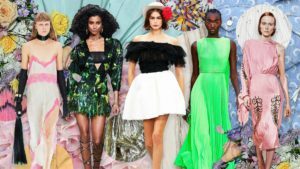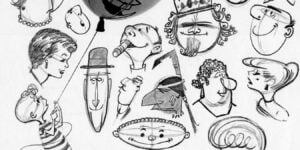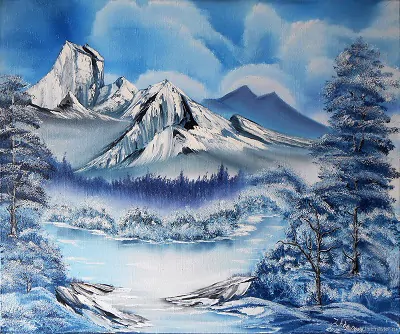“Cuteness” can be roughly translated to Japanese as kawaii art. It refers to the culture that celebrates all things cute and embraces fictional characters as an embodiment of positivity. The concept originated in Japan and quickly became a global phenomenon. For example fashion, art, technology, food, and even art.

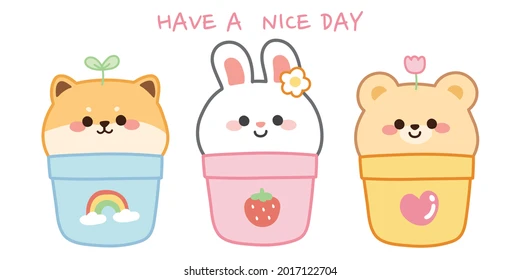
It is not only cuteness that has infiltrated media and been used as an expression but also carries the stigma of being feminine. This slant on began with women mimicking a style called Burriko, which means “woman who acts like a child”. It’s evident in the kawaii style of dress and subcultures such as Lolita (think frilly dresses and bows), fairy-Kei, (pastels and colorful hair, wings), and decode (numerous accessories, bedazzled every item), and many other ways. You can think of the adorableness that you would associate with a preschooler. Now, you can apply it to an adult woman and you will have an understanding of Burriko. kawaii doesn’t have to be gender-specific. Stereotypically feminine imagery is a product culture.
Kawaii Art History
Japan’s kawaii tradition is thought to have started in the 1970s when teens developed childlike handwriting. There were many names for the stylized script, including Marui Ji, Konerko Ji, (round writing), and Nuriko Ji, (fake child writing). The curvy lines of the stylized script included curvy, noodlelike lines alongside hearts, stars, and cartoon faces. Many believe this trend was a response to Japan’s rigid culture after World War II. The new, cute style allowed youth to express themselves. Although Marui Ji was banned in schools, advertisers loved the playful style and it led to the creation of one of the most iconic kawaii art characters today.
Kawaii_Culture_in_Japan_A_Bibliometric_Analysis_- Download
Famous Kawaii Art Characters
In 1974, Japanese stationery brand Sanrio introduced its iconic character, Hello Kitty. Yuko Yamaguchi designed the adorable white cat with a pink bow and no mouth. Printed on a vinyl coin purse. Hello, Kitty has been recognized worldwide almost fifty years later. She was on many products and even her-themed bullet train. Japan appointed Hello Kitty their official tourism ambassador in 2008 and invited the rest of the globe to celebrate Japan’s proud kawaii heritage.
What makes something Kawaii Art?
Although there are many kawaii characters to choose from, they all share a few commonalities. Kawaii characters have a simple design. They are small and compact, with wide eyes and a small nose. This is what makes them so charming because viewers can project their emotions onto the characters, whether they are tiny children or adorable animals.
Furthermore, kawaii art characters are often outlined in thick black lines and have a limited palette of pastel colors.
Cute Art
The artworld is also seeing “cuteness” flourish, despite the popularity of cartoon characters and consumerism. This style has evolved to include Guro–kawaii (grotesquely cute), Ero-kawaii [erotic cute], Kimo–kawaii (“creepy cute”), and Busu-kawaii (“ugly cute”).
One contemporary artist to adopt the style is Takashi Murakami, who has developed his own set of cutsie–and often unsettling–characters. Murakami, one of Japan’s most renowned artists, is also the founder of the Superflat art movement. Superflat, which is inspired by Japan’s cuteness obsession, specifically manga and anime, blurs the lines between commercial culture and fine art. His smiling flowers and the iconic Mr DOB are two of his most well-known characters.
Yoshitomo Nara is another artist who has been considered to have been inspired by kawaii. He has had nearly 40 solo exhibitions around the world since then. Nara is most well-known for his ambivalent paintings that depict children and animals, which appear innocent and sinister simultaneously.
Do read about more information about how kawaii art originated from Japan and now is in Europe. PDF – https://www.researchgate.net/publication/326193690_Kawaii_Aesthetics_from_Japan_to_Europe_Theory_of_the_Japanese_Cute_and_Transcultural_Adoption_of_Its_Styles_in_Italian_and_French_Comics_Production_and_Commodified_Culture_Goods
Kawaii Food
Although sushi may be the most popular Japanese dish, bento boxes are even more in demand. This trend transforms basic packed lunches (which usually consist of rice, fish, meat, or vegetables) into beautiful works of art. Kawaii has inspired two different bento box styles: kyaraben, (character bento), and oekakiben(picture bento).
Tips for Creating Cute Kawaii Art
Let’s be utterly adorable by creating kawaii art! This article will give you 10 tips to create adorable artwork. These include color choices, shapes, and different design styles. Find out what you need to make your artwork “kawaii”, for all your cute design needs. To illustrate the kawaii design, we’ll be using Envato Market examples.
Simplicity is the key
This is where you should start. Simple kawaii art designs are the best way to give your artwork a cute look. It’s easy to make something cute look creepy if you overdo it with icons or character designs. Over-detailed designs or a design that approaches too much reality can lead to a similarity in the way it is perceived as both unsettling and charming.
Let’s take a look at the illustration. It’s simple and adorable. The tiny faces of the peas have a curving line and are made up of dots. This design lacks any additional features. Simple, cute designs don’t need ears or noses. However, blushing isn’t necessary to overpower the design and is more than welcome.
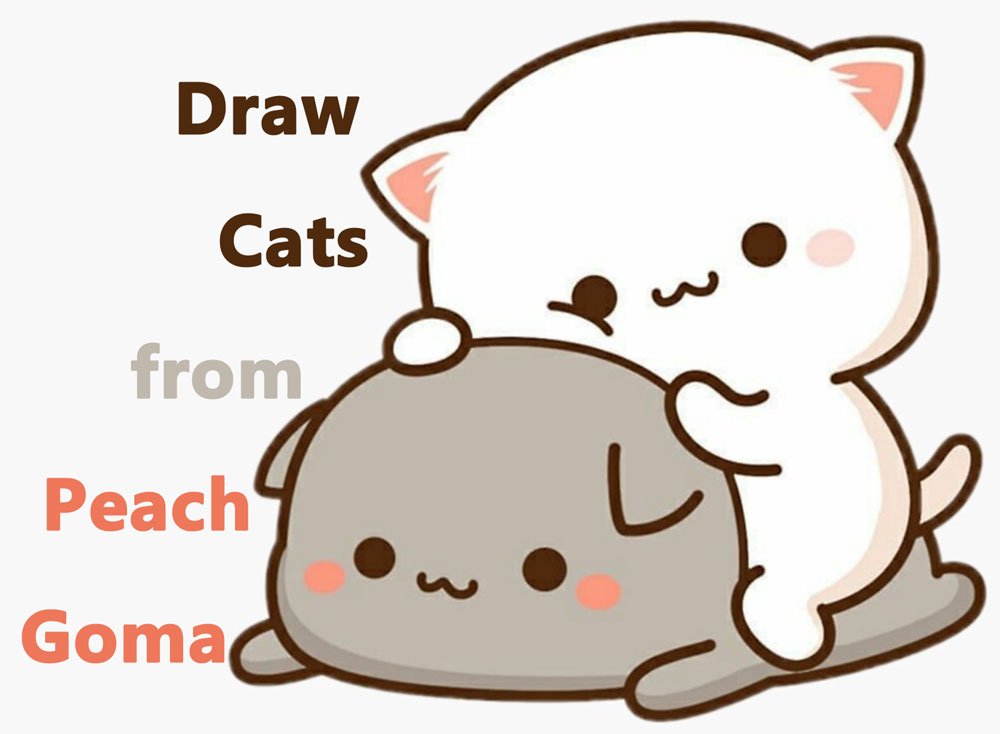
You’ll also notice how flat the design looks. Flat colors, simple lines, and small features. It’s easy; it does everything you need.
What about a cute design? This is an example of How To Cut. It’s a blog that demonstrates how simple shapes and objects can be cute, and kawaii in particular. You will be amazed at how easy it is to do everything in six steps with minimal details.
Use Color Palettes to Keep It Simple
All colors can be used to express artistic ideas, but some palettes are more appealing than others. This is due to kawaii artwork being child-friendly and sharing a lot with children’s media.
This is not to suggest that kawaii art is only for children or aimed at them at all. It’s just to say that they share similar design sensibilities and colorways. We’ll make some notes on common color palettes that work well.
Particularly common in kawaii art are brights, pastels, and rainbows. Bright colors can be used for many purposes: candy and fruits, small objects, and scenes with kawaii characters. Bright colors can be very attention-grabbing because the artwork is so simple. Using a rainbow of bright colors within a design makes adorable artwork even more charming.
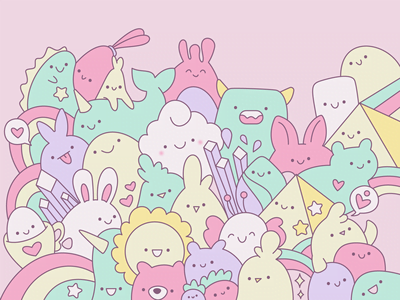
Pastels are sweet and soft, just like a lot of kawaii characters. We can think of tiny bunnies, marshmallows, or a variety of sweets. You have the option to use a pastel rainbow in your color scheme or include actual rainbows in your design.
You can also use a limited color palette. If you are looking to limit your options, consider limiting the palette to two, three, or even four colors. This is often used to screen-print cute characters or artwork onto products. However, it can also be a fun design challenge. Below are some examples of cute limited-color palettes.
Flat colors and soft gradients
Flat colors are more than acceptable in kawaii art design. You don’t have to spend a lot of time creating artwork. A thick outline, flat colors, or some cel-shading can add depth and dimension to your design.
Soft gradients can be used to create a more varied color, regardless of whether the work is digital or traditional. The soft gradients will not overwhelm a design. They will keep it friendly and sweet without making it too realistic or adding harsh lighting sources.
Although there are exceptions, they can still be found. However, starting with these ideas will allow you to experiment with tiny variations of your kawaii art design, without making it too complicated (aka “too many”).
Corners and rounded shapes
You’ll also notice how devoid it is of sharp edges as you examine kawaii-style designs. This is a common characteristic of design for children and young people: cuteness is often round. This gives artwork the appearance of being soft, squishable, or huggable.
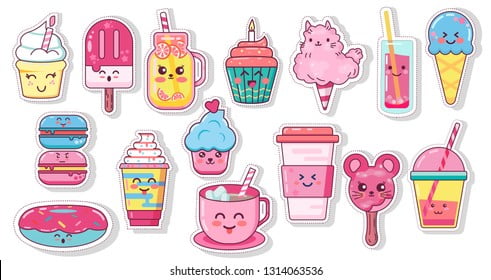
Round corners make design work more friendly than if the cartoon face of a plant has huge, shining eyes. The spiky plant suddenly looks friendly and more playful than anything that can hurt viewers.
You can think of making objects cute and scary as babyproofing a room. Protect sharp edges by creating a radius. It’s rounding corners slightly, or quite a bit, depending on the type of design and how squishy they are.
Give it a face!
This is the most popular trope in kawaii-style artwork: faces everywhere! Everything gets a face, from teacups to snowflakes. Personified objects can be cute and funny, appearing in the art for a wide range of demographics.
You can instantly transform ordinary objects into kawaii-style designs by adding little faces to stickers, icons, packaging, or textile prints. Add a face when in doubt! It’s that easy.
Be Emotional
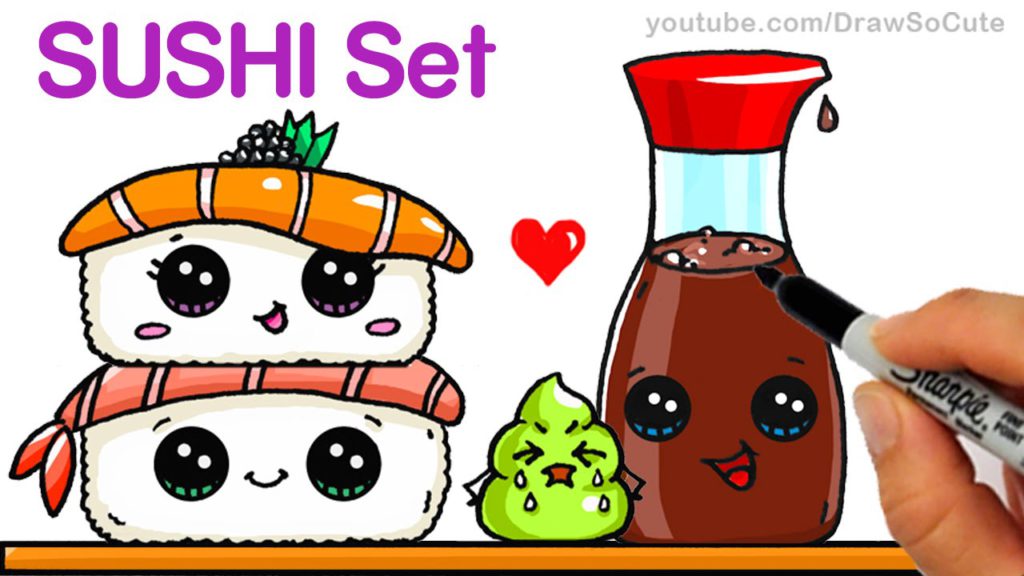
You may want to draw more than just a few smileys on the adorable characters or objects you have created. This is where emotions come into play when designing. You can create many different feelings for your characters.
Simple shapes and limited details can represent happy, mad, sad, or any combination thereof. Sideways ‘Vs can be used to open or close your eyes. Are they mad? This can be done with a sad face or a simple color change. Are you able to tell if the prickly character is relaxed or sleepy? This can be done with either closed or semi-closed eyes.
Take a look at your faces and determine how many lines or shapes are needed to communicate that message. Next, you can start to add different faces to the drawings.
Food!
Food is a popular subject in kawaii, as I mentioned in previous articles. It’s possible that we as a species need it to survive. It’s easy to find it almost everywhere. It could be because secretly, food is your friend.
No matter the reason, food is ready to be kawaiily designed. You can draw fruits, vegetables, sweets, and savory treats in bright or subtle colors. Then add them to your designs.
Big Heads, Little Bodies
We’ve already talked about objects, but what about humans or humanoid characters and people? While normal human proportions are cute, they are not “kawaii”. It’s not enough to just look at the cartoon-like distortions. You need to dive into the mind-numbingly adorable world. Giant heads, sometimes with huge eyes, and tiny bodies.
Although there isn’t much space for design details in a small body, there are some. Look at the tiny characters below. Their clothing has enough space for small details such as tiny collars and sashes, as well as prints.
Consider all the details that could go into clothing designs for tiny dolls. Some of them are obvious, but showing the actual folds, stitches, renderings that go into a realistic clothing design would prove difficult. Instead, the emphasis is on the head, hair, and face.
Kawaii’s design is a defying of the law of gravity. The heads are often so large that they could snap the necks of living creatures. However, the giant, adorable heads of kawaii characters float above their small bodies and still look adorable.
Animals are automatically adorable
We’d be remiss if we didn’t include the most adorable of the cute: animals. There are many animals to choose from: cats, bunnies, and dogs, as well as baby birds. Drawing tiny animals in simple, rounded forms is irresistible.
Another tip for animals is to have big heads and small bodies. Hello, Kitty is one of the most iconic kawaii characters in history. Her proportions are insane compared to a real cat. They are perfect for a kawaii-style cat.

Let’s take a look at these jumping animals. You will be amazed at how simple and cute they are. Flat colors, simple forms, rounded limbs, and small faces make cute animals that jump into our hearts.
Kawaii Can Do Nearly Everything
We’ve already talked about food, animals, and everyday objects. But what about teeth? Are teeth kawaiiable?
They can, of course! Here’s an example of how something not usually cute can be made into a cavity-inducing sweet. Take a look at the pirate tooth. Can you tell me if you don’t wish that you had a cute pirate tooth hanging on your wall? It’s impossible. Don’t even bother trying.
Anything can look cute and fit into the kawaii design as long as it demonstrates the same qualities mentioned above: simple, cute faces, round corners, and rounded corners. You can make your car, stomach, tweezers, or tax document look adorable and huggable. With kawaii, you can turn scary or disturbing ideas or objects into friendly and cute concepts.
Let’s break it down
Let’s now take a look at ten tips to make kawaii designs more simple.
- Simplicity is Key: Keep your design simple.
- Color Palettes for Keep It Simple: Brights, pastels, and rainbows are perfect for kawaii.
- Flat Colors and Soft Gradients: Flat colors are simple and don’t overwhelm with too many light sources.
- Round Shapes and Corners The Curves are soft and friendly and can be hugged.
- Put a Face on it! Faces mean a friendly, cute design.
- Be Emotional: Express yourself with cute faces and cute objects.
- Delicious Food! An excellent and very common topic for kawaii arts.
- Big Heads and Little Bodies: The focus is on the heads and faces of kawaii characters.
- Animals are Automatically Adorable: Particularly baby animals.
- You Can Make Nearly Everything Kawaii: Take a look around your home or desk and see how everything can be made cute!
How do you draw doodle characters?
This week, I learned how to combine different characters into a kawaii-doodle. It looks cute. To make the design sparkle, I practiced adding textures to it.
I began by researching and sketching from reference. By the end, I was ready to design my design.
Kawaii Doodle Sketches
As I hadn’t done it before, I wasn’t sure how to begin kawaii college. Research is the best way to find out if you are unsure. I reached out to my “secret” teacher and began copying her doodles. It was very rough. I wasn’t trying to create a final drawing but to learn about the techniques and the processes.
I also bought her Etsy Practice Sheet to get ideas for drawing kawaii expressions.
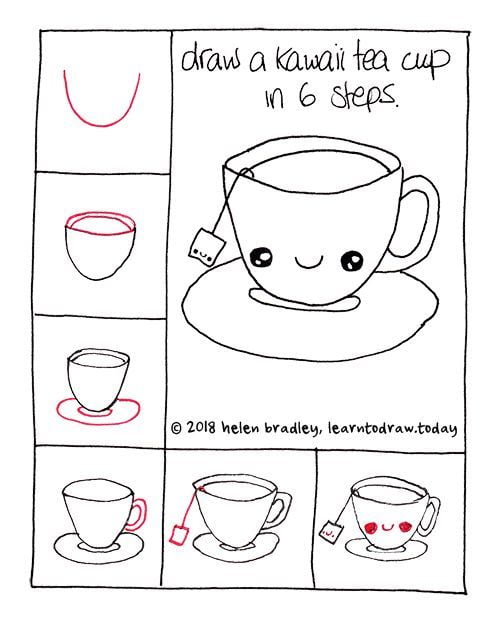
Naturally, I decided it was time to make a doodle. Scary!! It scares me! These are perhaps remnants from my school days when we were graded on …?. But I digress.
I had to overcome my resistance and draw something. It didn’t matter what it looks like, I just had to draw it.
After 30 minutes of panic, I was able to produce two sketches and it was time for dinner. I was shocked to discover that my kawaii drawings were not as bad as I had thought when I returned to them a few hours later. They turned out to be okay. umm… publicly. My husband commented, “Wow! These are good!”
Anatomy of a Kawaii Doodle
It’s not perfect. It’s a good start. I must continue practicing and making more drawings.
I used a Sakura Graphic pen (size 1). Tombow brush pen black.
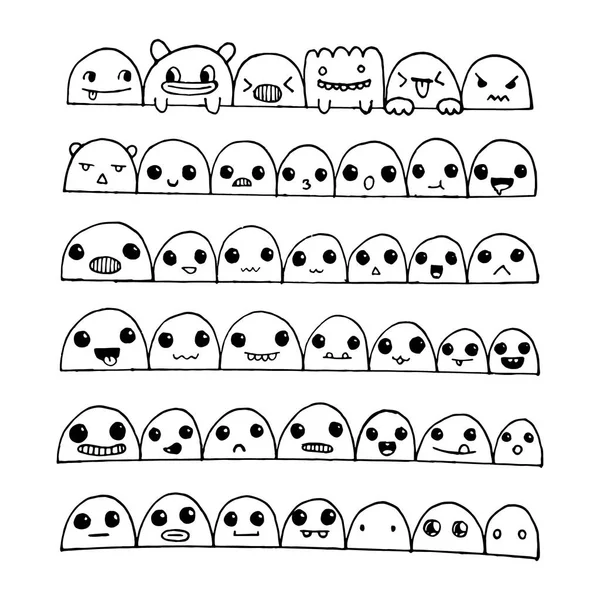
Full disclosure: All of the items in this list are mine. Amazon will pay me a small commission if you purchase anything through my links. It’s also okay if you shop elsewhere.
Do you have a process that I can use to make these doodles again and again? Yes! Here are five steps. If you find them useful, please let me know. Perhaps you have other steps that you would like to share?
Once you get the basics, it’s not difficult.
Five Easy Steps to Make a Kawaii Doodle
https://www.youtube.com/embed/eWt5SPzWTNc?feature=oembedHow to draw cute Kawaii characters
- Choose a theme, and then research a few characters you would like to draw.
- Draw the major shapes and add faces to them
- Fill in the large shapes with medium-sized fillers such as leaves, clouds, and spirals.
- Add some charms to enhance the design, such as stars, triangles, and mini-flowers.
- Fill in the gaps with textures and add texture to characters to make them more interesting.
Kawaii Doodle Tips
- Collaging images that are already cute is the key to success. It doesn’t make a collage cuter by simply putting in some not-so-cute images.
- You can use a variety of shapes, tones, and textures. You can make the faces look in different directions by using textured objects.
- To balance your drawing and make it more pleasing to the eyes, use principles for good design

Conclusion
The Japanese kawaii culture, which is so much a part of Japanese daily life, is very different from what we see here in India. Check out our Japanese guides if you’re planning to visit Japan. Explore our selection of kimonos, kokeshi dolls, and accessories to experience kawaii at your home.
Kawaii Art FAQs
Q1. What is kawaii art?
Ans. As I mentioned, kawaii is Japanese. In the 1970s, this idea was born out of rebellion against traditional Japanese culture. To stand out from the stereotypes of their society, girls wrote, doodled, and chose cuter clothes. It was a common form of cultural rebellion. This culture bled into art, creating visual arts, music, and performing arts. It is safe to say that kawaii has two main forms: fashion and visual art.
Q2. How do you do a kawaii style of art?
Ans. Kawaii can be incorporated into other crafts. For example, if you’re working with polymer clay it’s easy to make 3D Kawaii characters by adding three black dots for eyes or mouth. You can also use a black Sharpie to make simple marks and add Kawaii faces to your junk-modeling creations.
Q3. What kind of art is kawaii, and what are its characteristics?
Ans. The Collins English Dictionary in the United Kingdom introduced “kawaii”, which was defined as ” Japanese artistic style and culture that emphasizes cuteness using bright colors, characters with a childlike appearance “.
How do you design kawaii?
Q4. Are kawaii characters copyrighted?
Ans. Bunny and Panda, Koala, Monkey, and Polar Bear are all copyrighted characters. They may not be used without permission. You must obtain permission from the owner of any image or character if you want to use them for commercial purposes.
Q5. What is Japan’s obsession with cuteness?
Ans. But why are Japanese people so obsessed with everything cute? Reason 1: Kawaii usually refers to small children, babies, and small animals. They are helpless and need to be cared for. In a culture that values youth, both men and women are attracted to anything youthful.
Share with your friends

